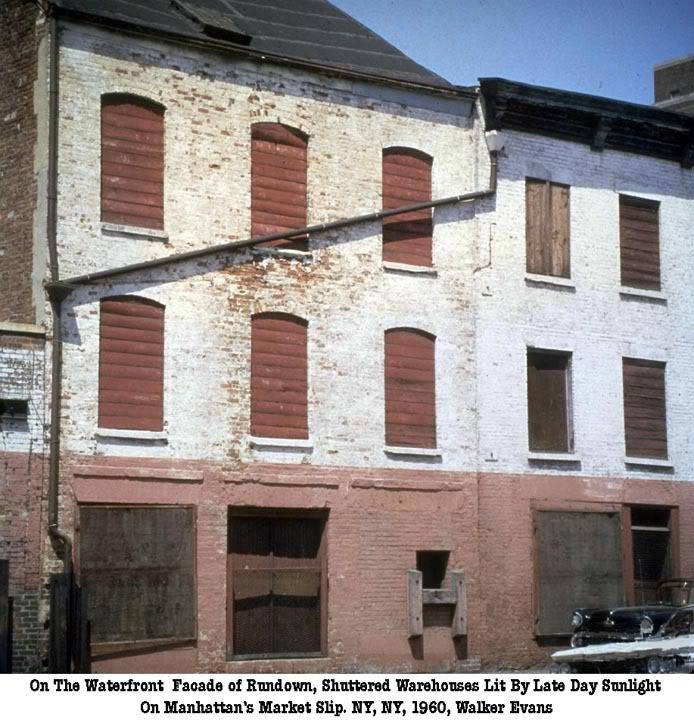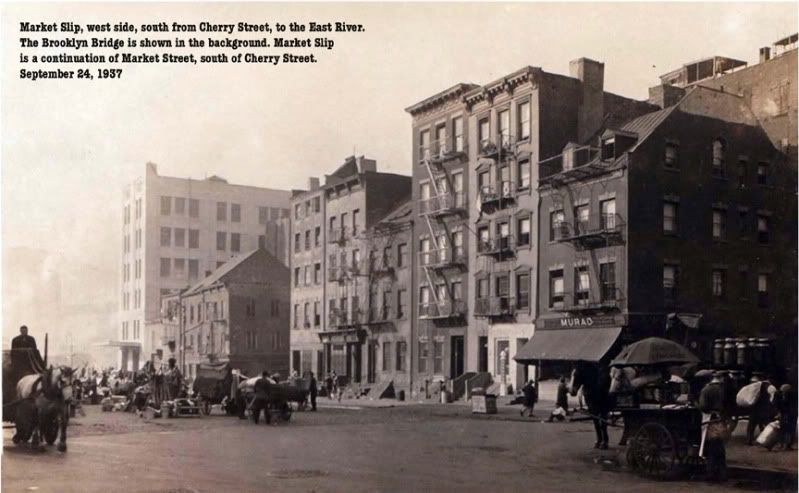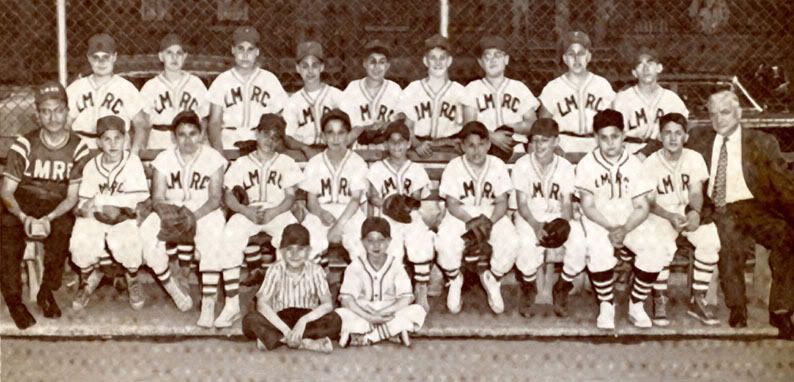Chinese & Italians Celebrate Shared History, New Historic Distict Even by New York standards, it was a remarkable multi-cultural event. Last weekend, some of the city's most well known Chinese and Italian community leaders gathered in a banquet hall in Little Italy for a special celebration. The occasion was the first annual "Marco Polo Day," a commemoration of the new Chinatown-Little Italy historic district.
Wednesday, December 2, 2009
Marco Polo Day On The LES
from the lodown on October 22
Tuesday, December 1, 2009
East Village Dumplings For The Lord
an excerpt from a nytimes article from 9/30/07By ADAM B. ELLICK
AS the sun rises over the imposing blue-green dome of the St. George Ukrainian Catholic Church on East Seventh Street near Third Avenue in the East Village, a small volunteer army of elderly women, many with shawls wrapped around their heads, descend into a nameless luncheonette across the street. The earliest arrivals limp in at 6 in the morning. Once inside, the women scurry around the chromed kitchen, colliding like slow-motion bumper cars.
Every Friday morning for more than three decades, these women have been hand-rolling 2,000 plump potato dumplings known as Ukrainian varenyky. The dumplings are then twice boiled, coated in a buttered onion sauce, and sold throughout the weekend. The annual proceeds of up to $80,000 go to the church, whose parish is more than a century old.
Varenyky have long been a traditional part of the diet for many of the 70,000 natives of Ukraine who live in the city, and who flock to the luncheonette on weekends from neighborhoods like Brighton Beach, Brooklyn, and Ozone Park, Queens.
Last spring, when four of the elderly women died, the luncheonette closed for several weeks and, like most of the institutions in a once-vibrant Slavic enclave that has since yielded to hipsters, seemed destined to vanish entirely. But on Sept. 9, after a summer of rest and contemplation, the remaining women returned and resumed their labors.
“They will say they won’t do it: ‘I’m not coming back, I’ve had enough of this, I’m tired, I’m worn out, I need to rest,’” said the Very Rev. Bernard Panczuk, the church’s pastor. “And the next week, you look, and they are back.”
Daria Kira, a freckled 85-year-old, embodies the resiliency of this group. She spent 20 days in the hospital last spring after leg surgery to treat cancer. But on the morning of Sept. 9, she woke up at 4 to ensure a timely arrival at the luncheonette’s reopening. The trip took 30 minutes.
Perhaps she came from Brooklyn? “No,” Ms. Kira replied with a sheepish laugh. “From Second and Houston.”
By 10 a.m., she was churning out tissue-thin slices of dough from an archaic wooden rolling machine that may predate its users, who range in age from 64 to “near 100.”
“My leg still hurts me,” said Ms. Kira, who had been on her feet for four hours. “But I work because it’s the church.”
Ms. Kira is chatty; some of her co-workers, among them Julia Warchola, a stern-faced 73-year-old, are less so. “No questions!” she barked at a visitor as she lifted a huge pot of boiling water. “Too much work to do.”
All but two of the women are widowed, and many of them tell harrowing tales about their early life in war-torn Eastern Europe.
Cherouny Printing And Publishing
The Burial of the Apprentice
Evidently the owner of Cherouny Printing, the employer of the poisoned women at a 1914 wedding, was more than just a printer. More to come on Cherouny.
Evidently the owner of Cherouny Printing, the employer of the poisoned women at a 1914 wedding, was more than just a printer. More to come on Cherouny.
Sunday, November 29, 2009
Mary Malchiodi Of The Fourth Ward: Part 5
st.joachim
Note that the women who were poisoned were employed at the Cherouney Printing Plant on Vanderwater Street. At that time the Fourth Ward had many factories and blue collar jobs.
Note that the women who were poisoned were employed at the Cherouney Printing Plant on Vanderwater Street. At that time the Fourth Ward had many factories and blue collar jobs.
Mary Malchiodi Of The Fourth Ward: Part 4
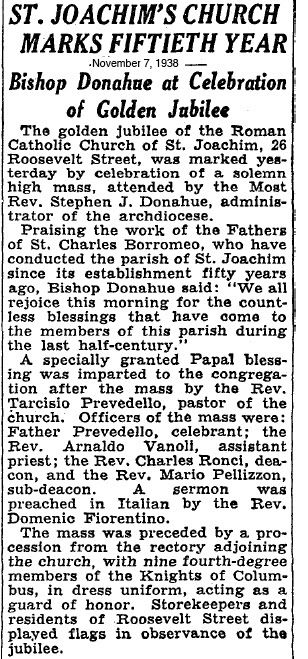
More on the Church of St. Joachim and the Congregation of Missionaries of St. Charles Borromeo
(Roman Catholic)
26 Roosevelt Street, New York, N.Y. 10002
The Roman Catholic parish of St. Joachim was founded in 1888 as a haven for Italian immigrants. Previously, Italian Catholics had been relegated to attending mass in the basements of neighboring churches. In 1967, a six-block area that included the church was cleared so that the Park Row housing development could be constructed. The parish of St. Joachim was merged into St. Joseph's Catholic Church, located nearby at 5 Monroe Street.
Founded by John Baptist Scalabrini, Bishop of Piacenza, Italy (d. 1 June, 1905); approved in principle by Leo XIII in a Brief dated 25 November, 1887; constitution definitively approved by a decree of the Sacred Congregation of Propaganda , 3 October, 1908. The expediency of providing for the spiritual — and also, in some degree, for the temporal — needs of Italian emigrants to America was forcibly brought home to Bishop Scalabrini by the pathetic spectacle of a number of such emigrants waiting in the great railway station of Milan. Acting upon this inspiration, and encouraged by Cardinal Simeoni, then Cardinal Prefect of Propaganda, the bishop acquired at Piacenza a residence which he converted into "The Christopher Columbus Apostolic Institution", forming there a community of priests which was to be the nucleus of a new congregation.
This congregation, which was henceforth to be known as the "Missionaries of St. Charles Borromeo", was to be governed by a superior-general, dependent upon the Congregation of Propaganda ; its aim was to maintain Catholic faith and practice among Italian emigrants in the New World, and "to ensure as far as possible their moral, civil, and economical welfare"; it was to provide priests for the emigrants, as well as committees of persons who should give the good advice and practical direction needed by poor Italians newly arrived in foreign ports; to establish churches, schools, and missionary homes in the various Italian colonies in North and South America, and to train youths for the priesthood. The members of the congregation promise obedience to their superiors in the congregation and the ecclesiastical hierarchy.Seven priests and three lay brothers of Bishop Scalabrini's institute left Italy, on 12 July, 1888, of whom two priests and one lay brother were bound for New York, five priests and two lay brothers for various parts of Brazil. On this occasion, Cesare Cantú, the famous Italian historian, addressed to the Bishop of Piacenza some memorable words of congratulation, asking leave to add to the bishop's blessing on the departing missionaries, "the prayers of an old man who admires a courage and an abnegation so full of humility ". A welcome had already been assured these first missionaries of the congregation by a commendatory letter (1 June, 1888) of Leo XIII addressed to the American bishops.
Immediately after their arrival in New York the new missionaries were enabled to secure a favorable site in Centre Street, where there was a colony of Italians, and in a short time a chapel was opened; soon after this the church of the Resurrection was opened in Mulberry Street; lastly, a building in Roosevelt Street, which had been a Protestant place of worship, became the property of the mission fathers who transformed it into the church of St. Joachim, the first specially Italian church in the Diocese of New York. The Society of St. Raphael (see Emigrant Aid Societies ) was organized at Ellis Island. The good work thereafter spread rapidly through the continent. The United States and Canada now (1910) contain 21 parish churches, besides several chapels, served by the congregation; in Brazil the fathers have charge of 13 parish churches, mostly with schools attached, and 2 important orphanages. The two provinces (Eastern and Western) of the congregation in the United States number 45 priests and 3 lay brothers, while the single province of Brazil numbers 35 priests and 5 lay brothers.
a previous post where St. Joachim was mentioned
Mary Malchiodi Of The Fourth Ward: Part 3
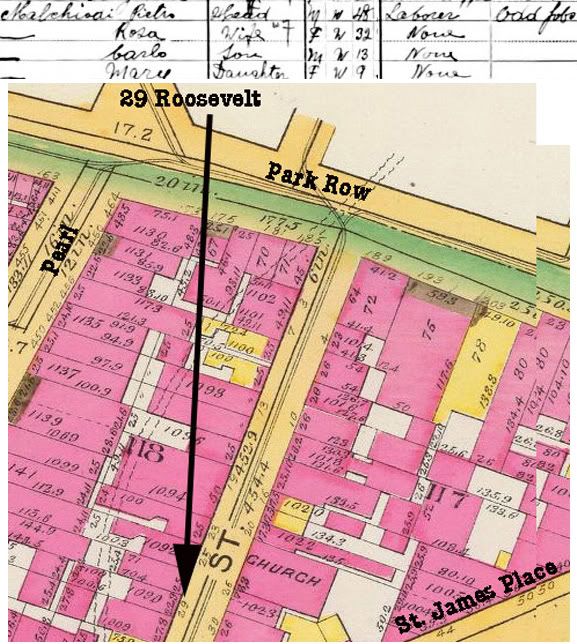
I tried to get a sense of where 29 Roosevelt was, since it no longer exists. I matched up a portion of Mary's family census with a map of that era. Roosevelt ran in a north/south direction and was parallel to Oliver and Catherine Street. Now I'm curious as to what the church was across the street from Mary. Her family may have attended there. Her father was Pietro, her mother was Rosa and her older brother was Carlo.
Mary Malchiodi Of The Fourth Ward: Part 2
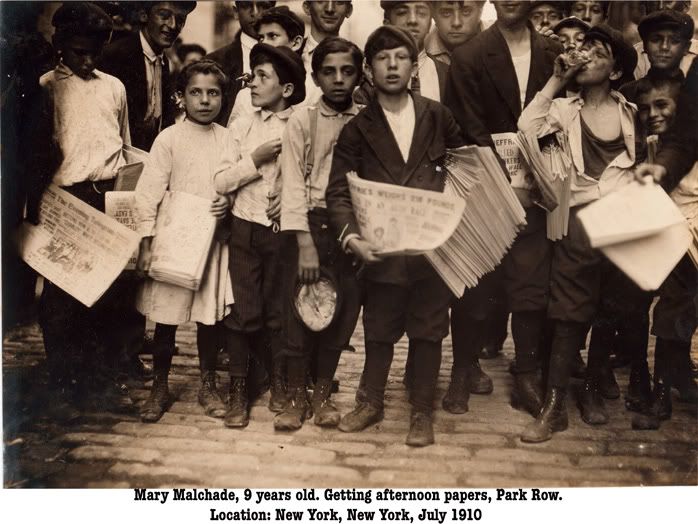 Here she is with her fellow news vendors a few months later than the previous photo. From what I can make out of the headline that the boy has on the left (I have a higher definition photo) it looks like the story referred to was the one below. I'm sure the dates given for the library of Congress photos may not be accurate. Newsies always wanted sensational stories to sell their "papes." Things haven't changed, especially in New York City with the Post and the News. I wonder what that boy on the right is swigging down?
Here she is with her fellow news vendors a few months later than the previous photo. From what I can make out of the headline that the boy has on the left (I have a higher definition photo) it looks like the story referred to was the one below. I'm sure the dates given for the library of Congress photos may not be accurate. Newsies always wanted sensational stories to sell their "papes." Things haven't changed, especially in New York City with the Post and the News. I wonder what that boy on the right is swigging down?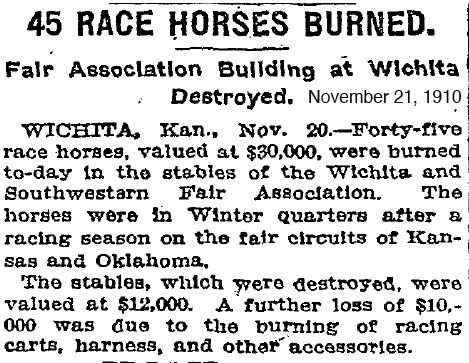
Labels:
library of congress,
mary malchiodi,
newsies,
Ward 4
Saturday, November 28, 2009
Mary Malchiodi Of The Fourth Ward: Part 1
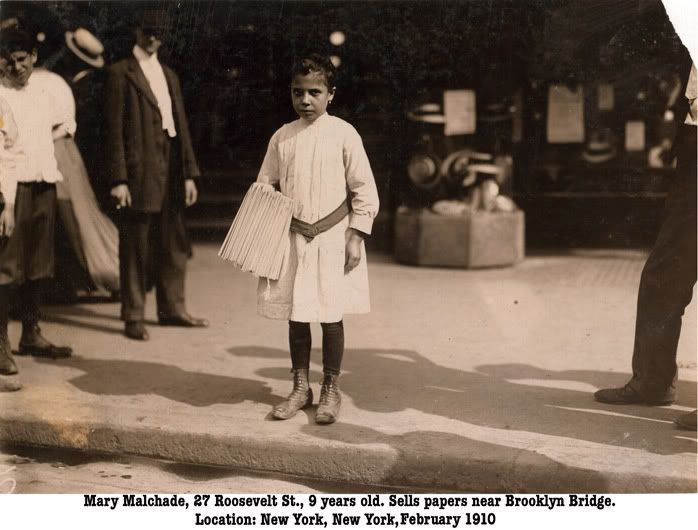
Lewis Wickes Hine has more than one picture of Mary in his study of newsboys and newsgirls over 100 years ago. They can be found on the Library of Congress site I believe her name was misspelled there because the census has no one named Malchade, whereas Malchiodi seems to be the closest common spelling. It looks like Mary might be wearing a sibling's pair of shoes since they look far too big for her.
Labels:
library of congress,
mary malchiodi,
newsies,
Ward 4
Turkish Night Club On Allen Street: 1942
Turkish Night Club 2
The descriptions:
The descriptions:
New York, New York. Turkish nightclub on Allen Street
Joe Levy, Jewish-Turkish-American owner of a nightclub on Allen Street
Turkish-American and his wife who own a nightclub on Allen Street. Their son is in the United States Army
Orchestra at a Turkish nightclub on Allen Street
Orchestra in a Turkish nightclub on Allen Street. The girl plays a tambourine between dances.
Guests get up and dance to the Oriental music whenever they please
Habitues of a Turkish nightclub on Allen Street drinking beer and eating hors d'oeuvres. Apparently women are left at home
CREATED/PUBLISHED: 1942 Dec.
CREATOR:
Collins, Marjory, 1912-1985, photographer.
PART OF: Farm Security Administration - Office of War Information Photograph Collection (Library of Congress)
REPOSITORY: Library of Congress Prints and Photographs Division Washington, D.C. 20540 http://hdl.loc.gov/loc.pnp/pp.print
DIGITAL ID: (digital file from intermediary roll film) fsa 8d24224 http://hdl.loc.gov/loc.pnp/fsa.8d24224
Market Slip 1960
Son Of The KV Rambo's JT Project
The JT Project is comprised of 20 year-old Jacob Webb and 21 year-old Todd Schefflin. The JT Project's debut album, "Love Passion Correspondence," is available world-wide on Itunes. They represent the bridge between Jazz, Hip/hop, R&B, and Neo-Soul. They are two good-looking young men that are committed to the worldwide distribution of their original music. The JT Project believes solely in an emotional connection with the audience. Music is a therapeutic source for the soul and The JT Project has the ability to lift the spirits of any of those who will listen.
For more information visit the official JT Project
Subscribe to:
Posts (Atom)

